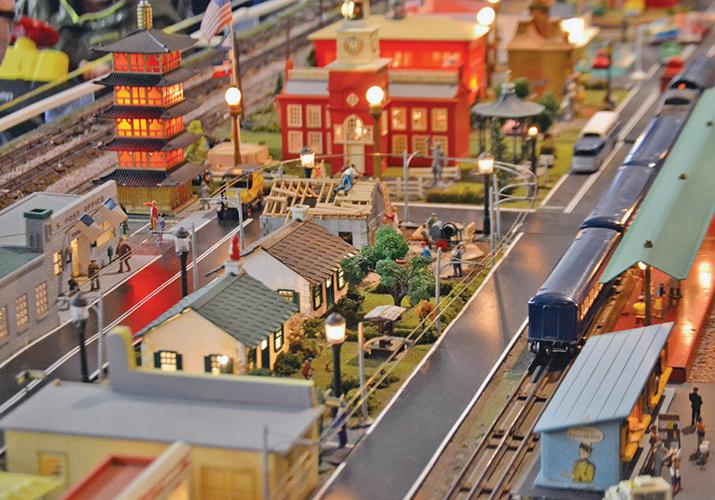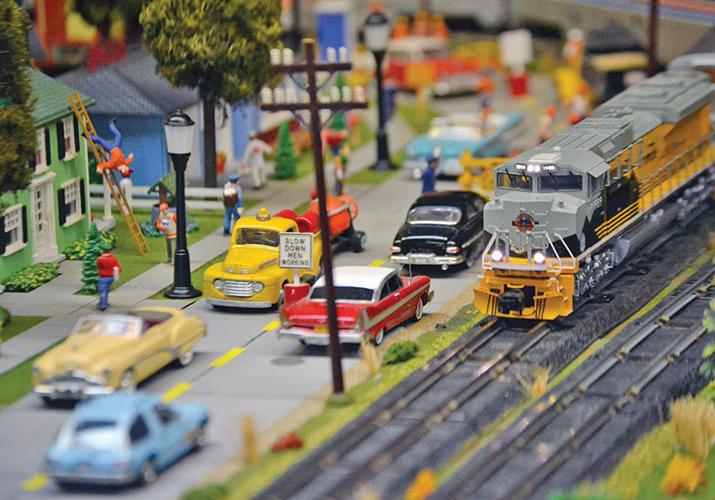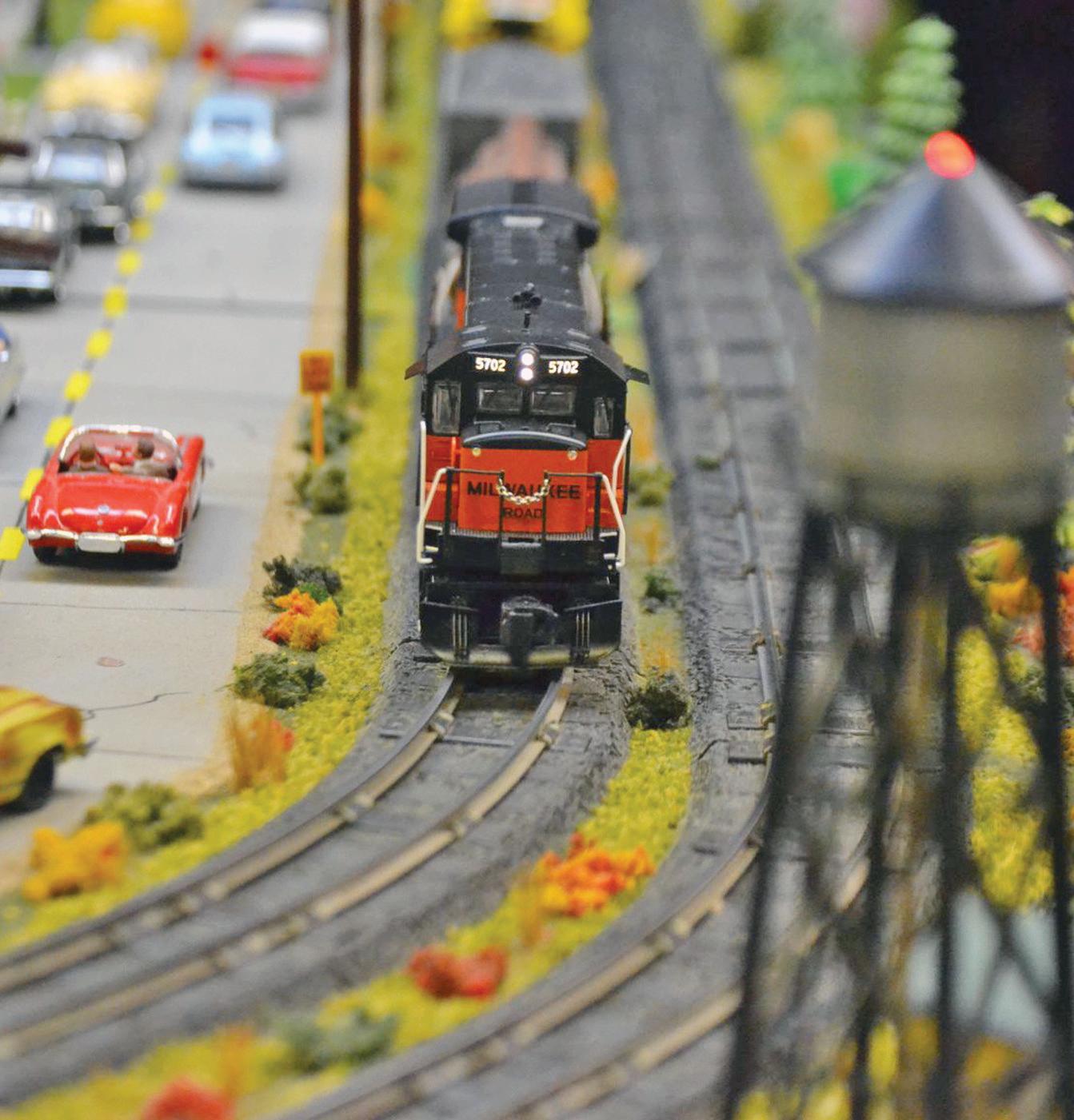
•
• Timeline of Model trains
• Model railroad scales
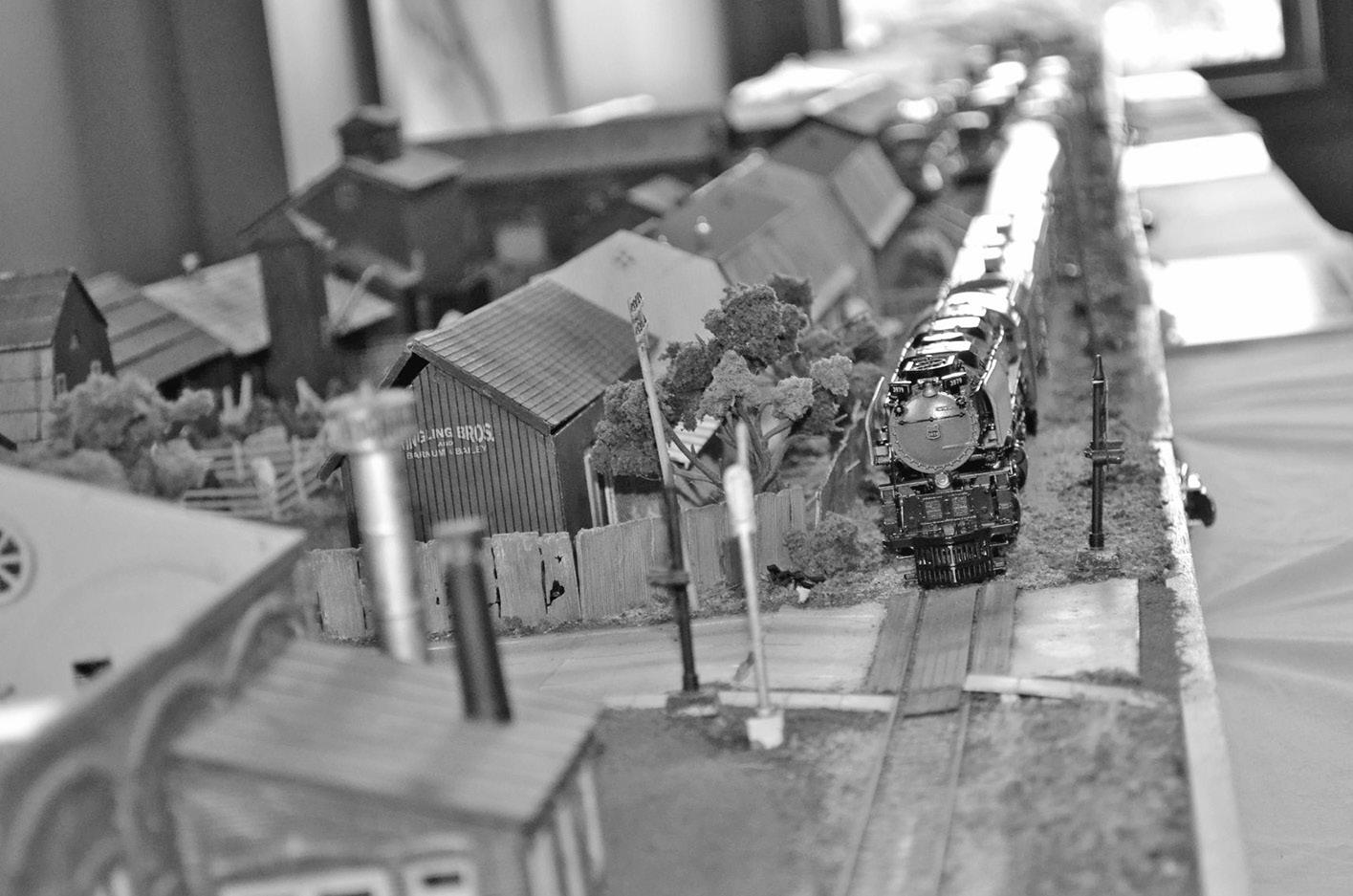


•
• Timeline of Model trains
• Model railroad scales

1860s: Wooden and metal floor toys that resemble trains are first made.
1891: Pioneering toy company Marklin of Germany establishes a series of standard track gauges for its clockwork (wind-up) and later electric-powered trains.
1896: Carlisle and Finch in the United States develops electric- powered trains that run on metal track.
1901: Lionel produces its first electric
train, built initially only as a store-window display. Shoppers are more interested in the display itself than the store’s products.
1920s: Toy electric trains blossom in popularity in what today is known as the “Golden Age.” However, most are big, expensive, and associated with rich kids.
1930s: Accurate model trains in O scale and later HO scale, more realistic in proportion and detail than “toy” trains, come into existence. They are primarily kits built by adult craftsmen.
1934: First issue of Model Railroader magazine.
1942-45: World War II halts toy production, including production of electric train sets.
Early 1950s: Toy trains are the No. 1 toys for boys, as pervasive in American
culture as video games are today. Lionel for a time is the biggest toy maker in the United States. There is not a single boy who doesn’t have trains or have a friend with a train set.
Mid-1950s: There is a clear split between scale model railroading for adults and toy trains sold to children. Plastic takes over as the primary material used to produce model trains.
1965: Ever improving electric motor technology and manufacturing techniques lead to the introduction of N scale trains, about half the size of HO trains.
1968: On the opposite end of the spectrum, LGB of Germany introduces large scale or “G” scale trains, which today predominate in the hobby of garden railroading.
1970s: Z scale, half again as small as N scale, is introduced by Marklin. Developments in the field of electronics begin to influence how electric trains designed and are controlled on the track. 1980s: Digital control systems and realistic sound-producing systems are developed.
Today: Model trains are more popular than ever.
There are an estimated 500,000 model railroaders and toy train hobbyists in the United States and Canada. Model trains are especially popular in England, Germany, Australia and Japan. The World’s Greatest Hobby campaign is launched to promote all aspects of model railroading.
Source: The World’s Greatest Hobby (www.greatesthobby.com).
All aboard! The Annual Delavan Train Show arrives in downtown Delavan March 9 and 10. The locomotive-themed event runs from 9 a.m. to 4 p.m. Saturday and 10 a.m. to 4 p.m. Sunday.
Featuring layouts and exhibits displayed throughout downtown Delavan in multiple locations, the train show is back, and organizers look forward to welcoming model train enthusiasts of all ages.
“Get ready to embark on a thrilling journey through miniature landscapes at the much-anticipated Delavan Train Show, returning to the Delavan American Legion Post on Saturday, March 9, and Sunday, March 10,” organizers said.
“This cherished event promises a weekend filled with enchanting model train displays, interactive activities, and fun for the whole family,” they added.
The Delavan Train Show will showcase a spectacular array of model train layouts, spanning both the main and lower levels of the Delavan American Legion Post and Delavan’s City Hall.
The event is open to the public with free admission, making it the perfect weekend activity for families looking to share in the excitement of the miniature railway world.
“The Women’s Auxiliary will be serving up delicious food to satisfy appetites or check out one of downtown’s wonderful dining options like Patty’s Deli, either of which are sure to provide a perfect opportunity to refuel between exploring the captivating displays,” organizers said.
WHAT: Delavan Train Show
WHEN: March 9-10
WHERE: Delavan American Legion Hall, 111 S. Second St. – This is where the show begins. Guests will receive a map and train “ticket” that can be punched at each location they visit.
COST: Free
HOURS: 9 a.m. to 4 p.m. Saturday, March 9, and 10 a.m. to 4 p.m. Sunday, March 10.
FOR MORE INFORMATION: visit delavantrainshow.com, call 262749-1073 or send an email to 53115.trainshow@gmail.com.

The Delavan Train Show is a beloved community event dedicated to celebrating the enchanting world of model trains. After a hiatus, the show returns to captivate audiences of all ages with its intricate displays that bring the miniature world to life with a family-friendly atmosphere.
“Join us for a weekend of locomotive excitement and create lasting memories with your loved ones,” they said.
The family-friendly event offers a smalltown festival feel, according to organizers.
“Kiddos of all ages can operate accessories, complete scavenger hunts to find characters and details on layouts, and even run the trains on the layouts,” they said.
Start exploring the train exhibits –many with active operating layouts – at the Delavan American Legion Hall, 111
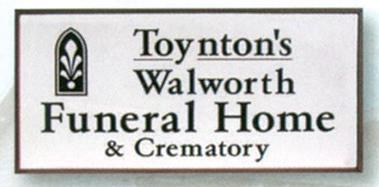
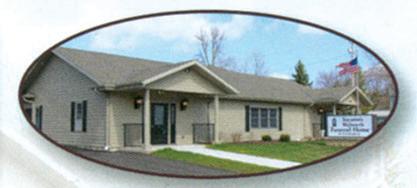


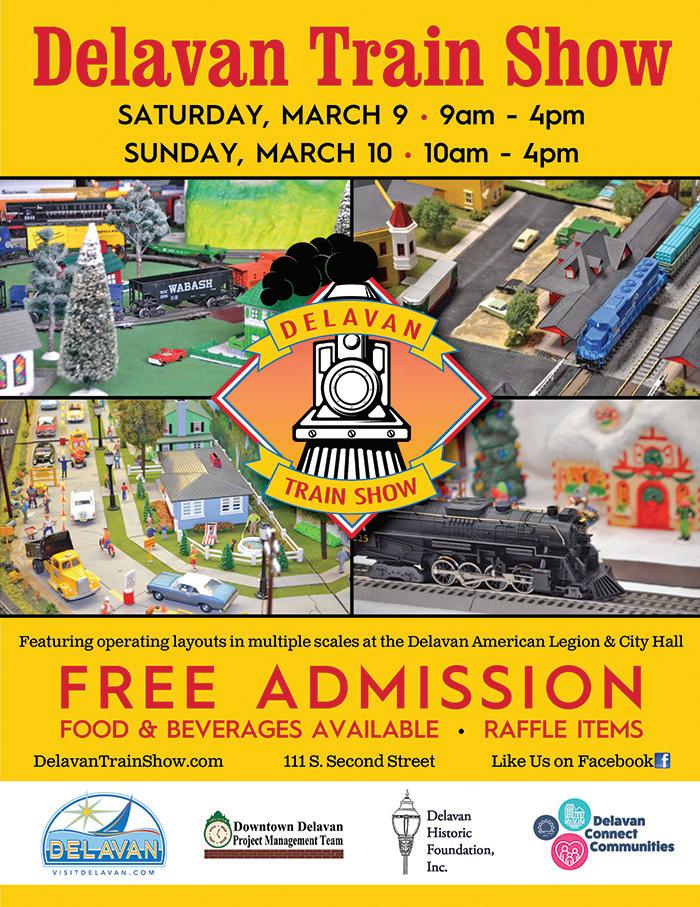


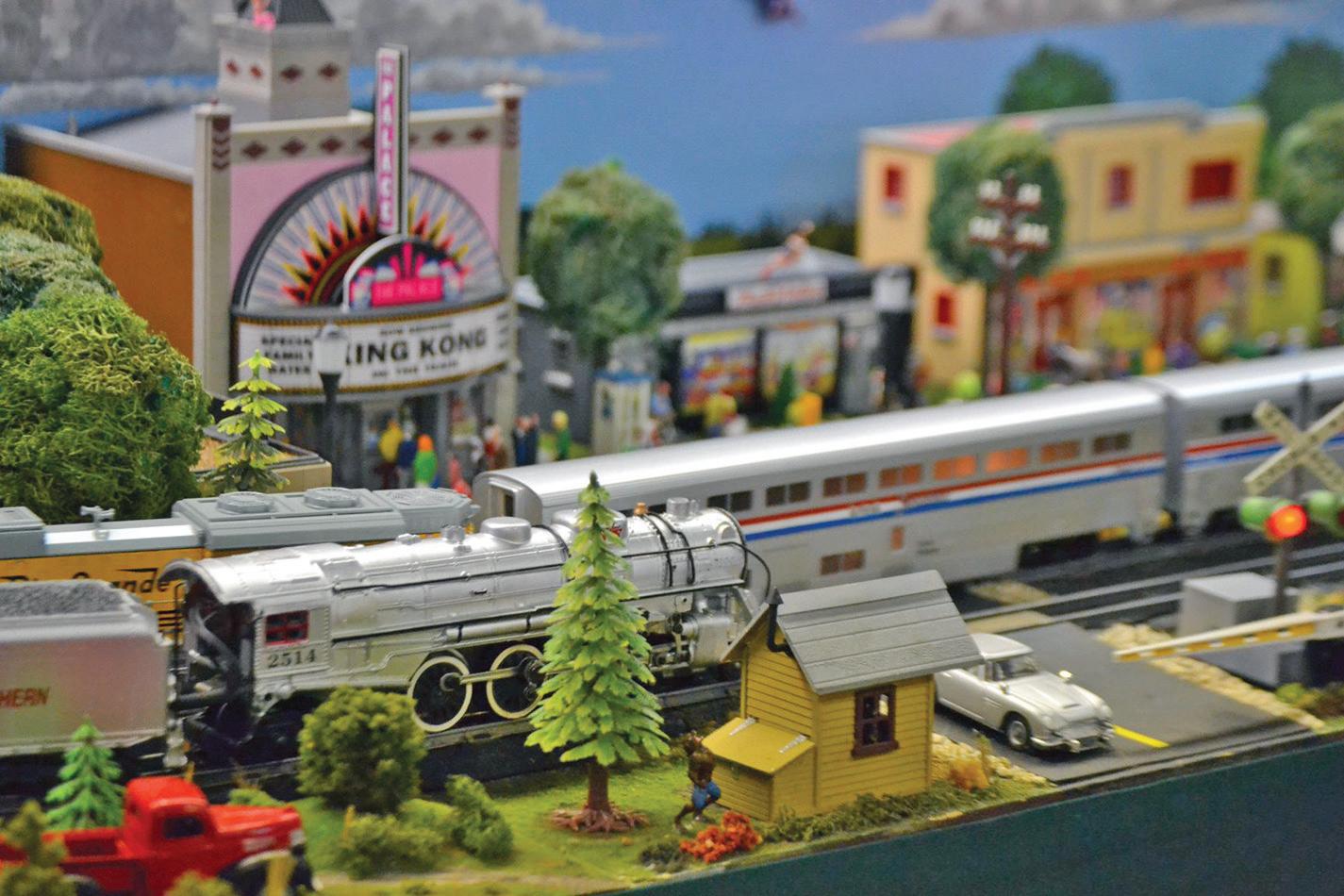
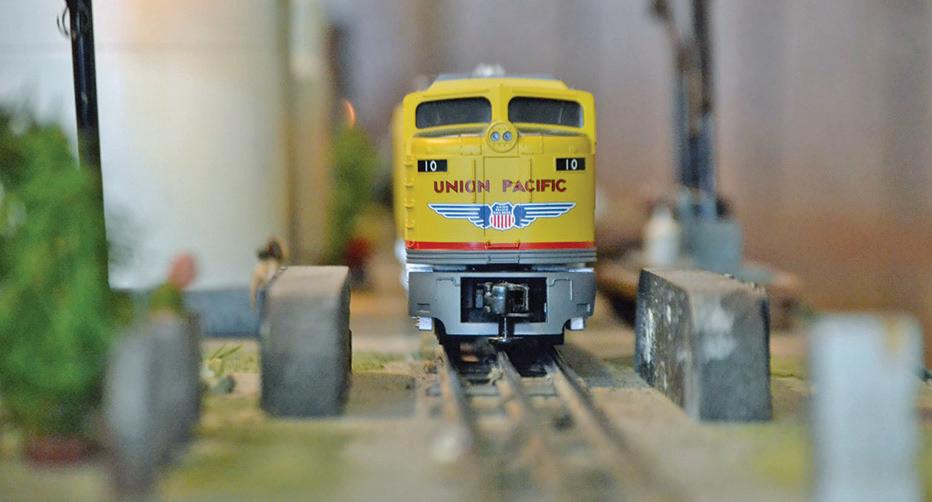
S. Second St. There, visitors will receive a map of the locations along with a train “ticket” to be punched at each stop they visit for a chance to win great prizes.
Visitors are welcome to stroll the entire downtown and stop at each location within walking distance or hop aboard the trolley and get around in style.
Each exhibitor aims to entertain visitors of all ages. They are dedicated to creating fun and family friendly layouts. While some layouts have seek-and-find activities, others have buttons that operate accessories on the layout.
A few even give visitors a chance to be the train engineer. Inspiration to join the model train layout hobby abounds throughout the two-day event.
“So, gather the family, bring your camera, and join us for a weekend filled with the charm of model trains at the Delavan Train Show,” organizers said. “Don’t miss this exciting event that promises joy, discovery, and quality family time!”
For more information about the event, like and follow the Delavan Train Show Facebook page, visit delavantrainshow.com, email 53115.trainshow@gmail.com or call 262-749-1073.
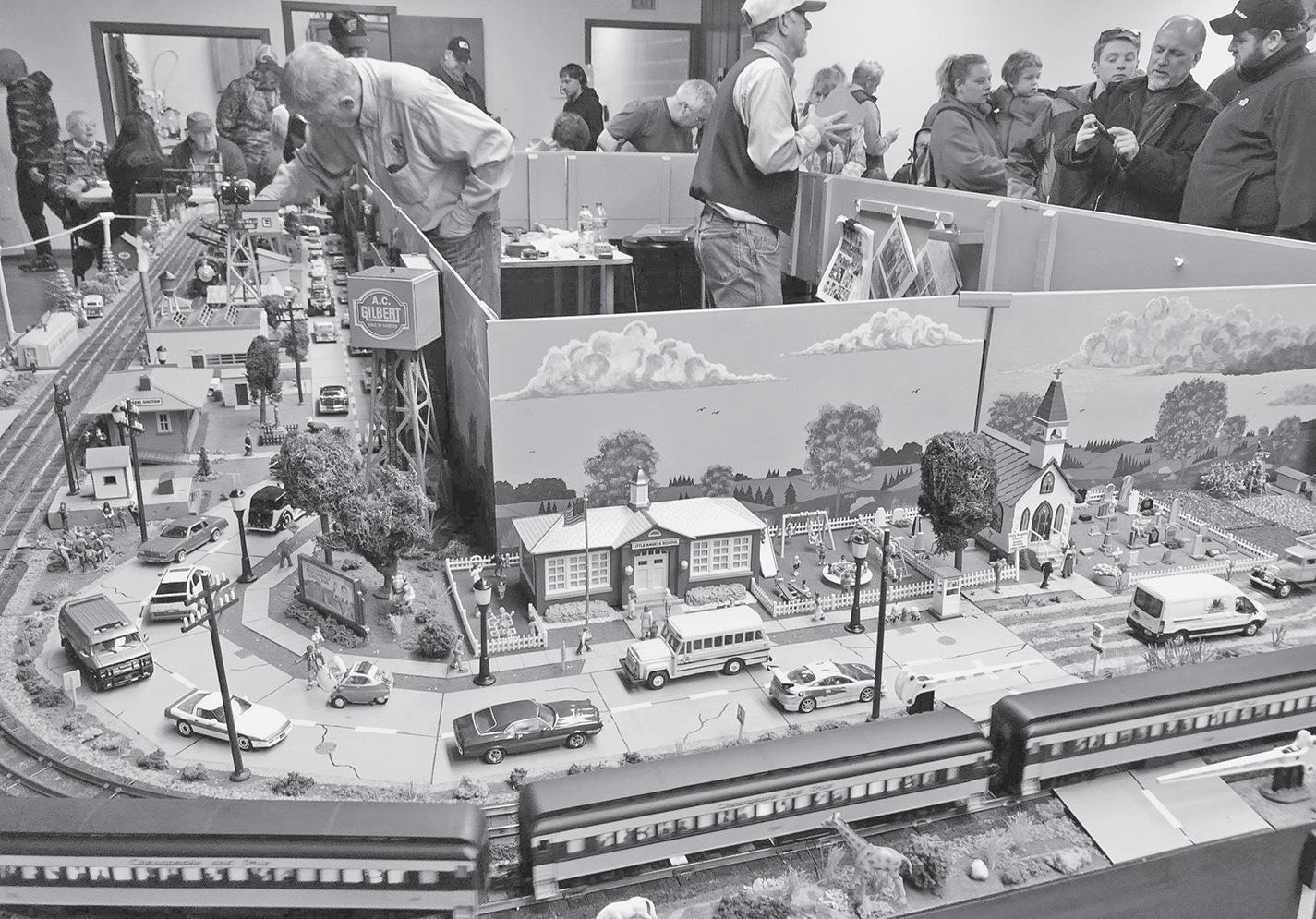


The history of model trains stretches back more than 150 years, almost as old as the railroad industry itself.
The first models were not constructed to any one scale or standard, as were more like toys without any way to have different trains working together.
As standards were set for toy trains, manufacturers chose to build to common scales, some of which are outlined below.
G scale trains were introduced by Lehmann Grosse Bahn (which translates into “Lehmann Big Trains”) in the 1960s. Because of its size and durability, these rugged toy trains are often used in outdoor garden railways, where hobbyists combine their love of trains with beautiful gardens and real scenic elements such as ponds and waterfalls.
While the trains are fun to play with, even the smallest set-up will take up a lot of room. Options for different types of trains and accessories are limited as well.
Depending on the manufacturer, G scale model trains range in scale from 1:20.3 to 1:32, but generally run together on the same gauge track.
At the turn of the last century, Lionel was the first to produce electric toy trains in America in what they called “Standard Gauge,” where the rails were 2.125″ apart. After the first World War, the smaller O scale (1:48) became the popular size for toy train manufacturers in America.
Many toy train sets run on three-rail track, which allows for complex track layouts to be built without complicated electrical wiring. Lionel continues to make O scale trains and accessories, along with a number of other manufacturers like Atlas, MTH, and Williams.
The period between the first and second World Wars saw the rise of smaller model trains, starting with S scale (1:64) in the 1930s, popularized by American Flyer Trains (made by A.C. Gilbert Co.). These trains became popular because they ran on more realistic-looking two-rail track instead of the three-rail system used by competitor Lionel.
While many collect vintage American Flyer trains, there are many manufacturers making modern S scale products today. Selection of trains and accessories can be limited, but some hobbyists enjoy the challenge of building their own models from scratch and improvising from parts.
HO scale (1:87) made its first
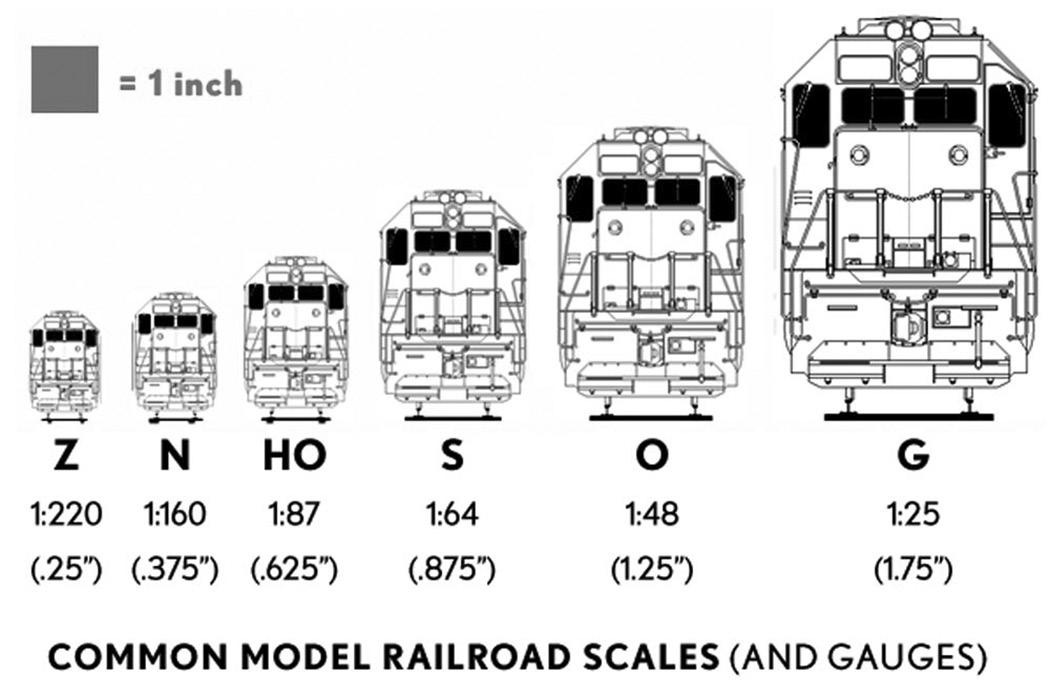
appearance in Europe before becoming popular in the United States in the mid1930s. The abbreviation “HO” stands for “half-O.” The smaller trains were less expensive and took up less space than their larger O scale cousins, which became popular with people who were moving into small homes and apartments in the 1940s.
As manufacturing methods improved after the second World War, HO scale trains became popular for their finer detail and wide range of available accessories. The widest variety of trains are available in HO scale from hundreds of manufacturers in all price ranges.
The first N scale (1:160) model trains were produced in Germany in 1962 but would not make their debut in America until 1967 when Aurora introduced their line of “Postage Stamp Trains.”
The designation “N” is short for “nine,” referring to the 9mm gauge between the rails of N scale track. While these early efforts were crude by modern standards,
many hobbyists were captivated by the small scale models.
Anyone looking to create long main line railroad runs and sweeping scenic vistas without sacrificing space quickly adopted the smaller scale. Today, N scale is only second in popularity to HO scale, with a wide variety of trains and accessories available.
The smallest practical model railroading scale was also developed in Germany. Toy manufacturer Marklin released the first Z scale (1:220) model trains in 1972, assigned the last letter of the alphabet since it was assumed no smaller trains could be made!
When these trains were later imported to America, they were first dismissed as a novelty. However, as manufacturing processes improved and the tiny mechanisms became more reliable, they gained their own niche following.
While the selection of trains and accessories can be limited, a number of
manufacturers are dedicated to producing modern American-style Z scale trains.
With the continued popularity of model railroading in America, hundreds of manufacturers large and small have contributed thousands of different trains and accessories in a variety of scales and price ranges.
As the manufacturing process became more sophisticated, modelers began to demand trains that more accurately resembled the real thing.
No matter what scale you choose, today’s model railroader can enjoy a finely detailed model that is “ready to run” right out of the box, accurate down to the last rivet. Less expensive models allow the modeler to add more detail as desired. You might be surprised at how good looking the most affordable models are today. You don’t need to spend a lot of money to get maximum enjoyment from the hobby of model railroading!
Source: Railroad Model Craftsman (rrmodelcraftsman.com)
